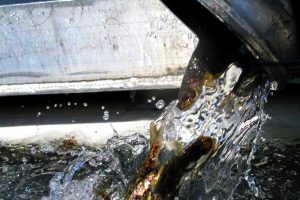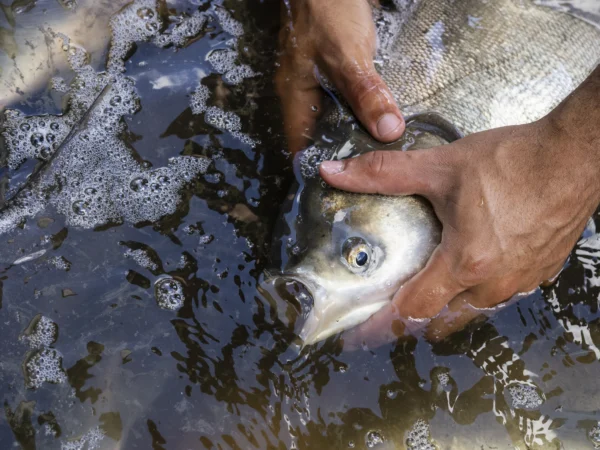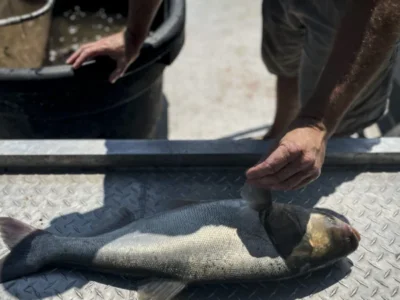
Cisco, whitefish, rainbow smelt numbers dropping
In the ongoing aquatic battle between predator and prey species in Lake Superior, the latter were winning the war for years.
Now — and for reasons scientists can’t pin down — prey fish species are losing that war.

U.S. co-chair of the Aquatic Community Committee, Lake Superior Partnership, Photo by fws.gov
“It’s an interesting trend for some time now,” said Henry Quinlan, the U.S. co-chair of the aquatic community committee at the Lake Superior Partnership. “The abundance for prey fish in the bottom drawls has been declining. For the past decade or so, each time we meet and review the data, there’s concerns for the results.”
Prey species, which include fish like cisco, whitefish and rainbow smelt have all declined in U.S. Geological Survey assessments of Lake Superior in recent years.
“We think it might have to do with the environmental changes,” said Mark Vinson, who chairs the predator prey fish committee for the USGS. “Changes in winter severity where you don’t see as much ice cover, so lake temperatures warm more rapidly in the spring.”
In ideal conditions, eggs are laid and mature under the ice in the fall, before hatching in April and June. However, when those cold water temperatures don’t fall far enough, the warming water can act as a stressor on those hatching numbers and limit them, which then decreases the fish population
That’s one explanation. But Vinson emphasized “fish are hard to study.” In a lake as big as Superior, judging fish populations, characterizing differing trends against shifting habitats and climates only makes the job of explaining why prey populations are falling harder.
“We look at predators, and we see healthy populations”
Accompanying that decrease is a negative correlation with predator species like lake trout, whose populations have been growing for some time.
“We look at predators, and we see healthy populations,” said Quinlan. “That shows signs of good condition factors, like length and weight of the populations.”
The success story of the top predator’s rebound is a popular one among scientists and fisherman in the Northern Great Lakes. After overfishing and an invasion by sea lamprey decimated the lake trout population in the 1950s in Lake Superior, a collaborative effort between the Great Lakes states and neighboring Canada addressed the fishery collapse.

Lake Trout Stocking in the Great Lakes, Photo by USFWS via flickr.com cc 2.0
After more than 50 years, the Lake Superior Fisheries Management Plan recommends discontinuing the stock of lake trout into the body of water. That good news was spotlighted at the 2018 State of the Lake Superior Conference in October.
While this rebound of predation might be a factor in prey species decline, scientists warn against singling out the flip-flop as the catalyst for falling prey species. Their hesitation is rooted in a lack of data.
“The prey database is a long-term data set,” said Quinlan. “When that started, lake trout populations were at record low numbers. There is some question if prey fish numbers were skewed because there were fewer predators.”
Scientists aren’t sure the drop in prey species isn’t a return to the norm
This is to say, scientists aren’t sure the drop in prey species isn’t a return to the norm. Prey species numbers were much higher years ago. Since data collection of predators only started in the mid-20th century, with similar data on prey species coming in the 1980s, what’s considered a balanced population between the two parties hasn’t been calibrated.
In trying to answer that question, Vinson has turned toward studying the success of predation recruitment, or how many species make it to adulthood, and how that affects the animals they eat.
“That’s what we study to try and figure out,” he said. “We got to have a handle on what the population is to figure out: how does that relate to what it was earlier?”
A USGS study looking at population trends of cisco, rainbow smelt and lake trout from 1958-2008 concluded if the lake trout recovery continued, it would mean rainbow smelt and certain types of cisco abundance could be expected to fall. However, a sustained lake trout population meant a reflection of “a more natural state.”
“Really, this could be a positive observation that our lake is entering a period of balance with predator and prey fish,” said Quinlan. “In large part, we believe things are in good shape.”
Featured Image: Ouch! Unlucky laker parasitized by sea lamprey, Photo by Mike Beauregard via flickr.com cc 2.0
1 Comment
-
This past September I took a submersible dive off the shores of Thunder Bay. Descended 200’. Never saw a single fish, animal or plant. Is this unusual or did I just have a freak dive?





